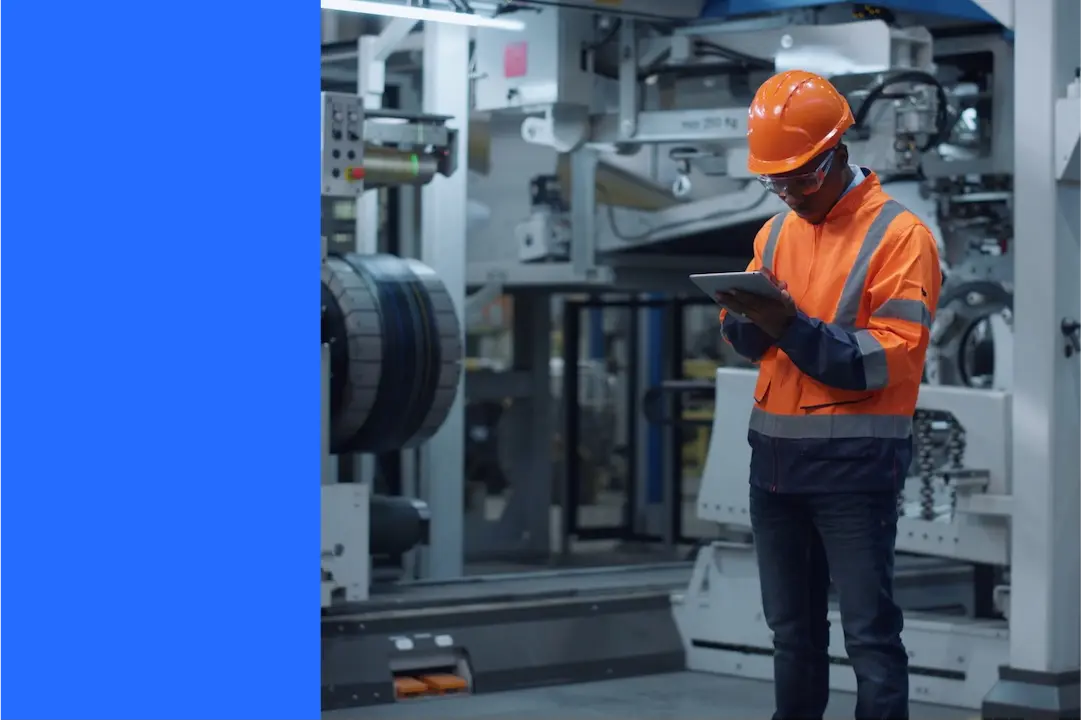
There are hundreds of maintenance management software solutions to choose from, which makes picking one a difficult task. You would think the almost endless amount of information on the internet would make it easier, but wading through dozens of vendor websites, analyst rankings, and articles can make the decision cloudier. Not only do you get a different opinion from each of these sources, but none of them seem to speak your language. To choose maintenance management software with confidence, you want to hear from the people who have stood where you are now.
That’s why we created a comparison guide that uses the words of maintenance professionals as its primary source to rank vendors.
This guide compares X maintenance management software vendors with the help of thousands of reviews about what these platforms do well, where they fall short, and what they offer your team, so you find the right system for your organization.
Key Takeaways
- This guide compares 10 leading maintenance management software vendors using user reviews from maintenance leaders.
- MaintainX ranks as the top maintenance management software for mobile-first design, scalability, and ease of use.
- When evaluating maintenance management software, it’s important to start by mapping your team’s needs to vendor capabilities, then run a pilot with a short list to get technician feedback.
Who is this guide for?
This guide is a fit if the following sounds like you:
- Your role: A maintenance manager, director, supervisor, or someone that manages maintenance operations.
- Your industry: Manufacturing (like automotive, building materials, food and beverage, and plastics), distribution centers, and facility management.
- Your team size: Five or more people operating at a single site or across multiple sites.
- Your current solution: Replacing a CMMS or transitioning away from spreadsheets, paper work orders, or nothing at all.
While you’ll still find helpful information for your CMMS search, this guide is not a perfect match for you if:
- You’re looking for an ERP platform or other enterprise systems for tasks beyond managing maintenance processes.
- You want a custom-built or on-premise tool to manage maintenance operations.
- You’re managing maintenance tasks for residential property management or small-scale building maintenance.
How we ranked the best maintenance management software
We analyzed reviews from software buyers and users between 2024 and 2025 from the following sources:
Each CMMS needed to have a minimum volume of reviews on each platform to ensure well-rounded feedback from users.
Each vendor was assessed based on the following criteria:
- Core maintenance tasks (preventive maintenance scheduling, work orders)
- Asset management (asset hierarchy, repair history)
- Inventory and parts (stock, reorders, BOMs)
- Mobile and offline capabilities
- Maintenance KPIs and reporting (dashboards, multi-site reporting)
- Integrations (ERP, IIoT systems, APIs)
- Scalability and support (multi-site, training, implementation)
- Time-to-value (setup speed, ease of use).
The best maintenance management software in 2025
1. MaintainX
What customers like
- Easy to use with quick adoption: Many reviewers call out a clean, user-friendly interface that makes it simple to create and complete work orders without heavy training.
- Mobile-first execution: Teams appreciate being able to create, update, and close work from a phone app that is built for mobile devices and has parity with desktop features.
- Work order and PM control: Strong sentiment around organizing work, standardizing procedures/checklists, and staying on top of preventive maintenance.
- Asset and parts visibility: Reviewers note helpful asset tracking, repair and maintenance history, and parts information connected to work.
- Responsive support: Multiple comments praise quick, helpful responses from support and implementation teams.
- Scales across teams and sites: Users report success rolling out to large technician groups and across multi-site operations.
What to watch out for
- Inventory depth. A few comments ask for additional inventory capabilities or finer configuration.
- Not tailored to highly regulated sectors: Broadly capable, but it doesn’t yet include the specialized controls and documentation workflows required in ultra-regulated environments.
- May require support for sophisticated workflows: For the most intricate workflows, plan on involving support to ensure a reliable setup.
What customers think
“Since having MaintainX, no machines have missed any work. Downtime has decreased massively! It’s a brilliant product and I wish I had access to it earlier!” - Chris, Maintenance Manager
“We use MaintainX to manage and maintain more than 50 critical assets, achieving significant improvements in machine uptime and overall efficiency. MaintainX is the very definition of a modern CMMS.” - Jorge, General Manager
“Maintain X has changed the way we look at maintenance. Being able to create work orders and procedures is so seamless it almost feels too easy. It's so easy to use and navigate that we have production members using it to complete inspections.” Derrick, Maintenance Manager
“MaintainX is easy to use and helps keep high priority tickets organized. Reporting and metrics are clear and easy to understand, and we have the ability to easily track site downtime across the entire system.” - Brandon, Senior Facilities Manager
“The amazing MaintainX system and support team has given us insight into our team capacity and increased our throughput of jobs. Since implementation, there hasn't been any job that has been forgotten.” - Gerry, Maintenance Manager
2. Limble
Key features
- Relatively easy to set up and use: Users say it has a clean, intuitive UI, fast onboarding, and low learning curve.
- Hands-on support and training: Reviewers highlight a responsive support team, fast live chat, and helpful videos.
- Configurable for daily operations: Technicians find the work order templates helpful and managers say that they help standardize workflows.
What to watch out for
- Stability and data-entry hiccups: Some teams report session timeouts, reloads, and unsaved changes that interrupt closing work orders. “Immense amount of wasted time logging back in and reloading work orders as Limble is constantly closing or reporting an error that requires refreshing.” - Aubrey, Mechanic
- Reporting depth and flexibility: Managers find built-in dashboards too rigid when they need custom KPIs or multi-metric views. “The limited options for reporting metrics…We would love to see something which is more varied and have more options to pick from.” - Aniruddha, Operations Support
- Difficult pricing for growing teams: Total cost can climb quickly as headcount and access needs expand. “The pricing can be a bit high for small to mid-sized companies.” - Martha, Production Engineer
- Not enough scheduling sophistication: Power users flag gaps in planning capabilities, like status states, staged dates, and a drag-and-drop scheduler. “The system does not support anything regarding planning and scheduling of work orders.” - Mads, Maintenance Manager
3. Fiix
Key features
- Solid core capabilities for work orders and PMs: Users frequently brought up that Fiix was helpful for managing work requests and preventive maintenance schedules.
- Asset and inventory records: Customers appreciated the ability to capture asset details, history, manuals, and parts, and link them to work orders.
- Audit and compliance support: Compliance dashboards and audit trails support inspections and governance without heavy customization.
What to watch out for
- Reporting setup and accuracy: Many users said that the reporting and dashboard features were difficult to set up in a way that fit their needs. “It’s hard to set up and use reports. Most of the reports are not accurate.” - Mario, Maintenance Planner
- Mobile app reliability: Customers reported frequent issues with the mobile version. “The QR code did not work properly when scanned by the Fiix mobile app.” - Nanda, IT Officer
- Friction in the onboarding process: Several reviewers mentioned that importing data into Fiix during implementation was a difficult process. “It was a nightmare setup procedure of creating all the CSV files.” - Edward, engineering technician
4. Upkeep
Key features
- Mobile work orders and requests: Teams can create, track, and close work orders on mobile, with photos and notes to document work in the field.
- Preventive maintenance scheduling: Recurring PMs and calendar views help organize upcoming maintenance and routine tasks.
- Asset and parts tracking: Basic asset records and parts lists make it easier to associate components to equipment and reference history during repairs.
What to watch out for
- Reporting depth: Reviewers say dashboards and reports do not go deep enough for analysis. “Reporting isn't very clean or easy to drill-down.” - Erika, Operations Manager
- App stability glitches: Users mention intermittent hiccups that slow technicians down. “It glitches often.” - Vivian, Reliability Administrator
- Steep learning curve for setup: Getting recurring schedules dialed in can take time without a clear plan. “Figuring out how to set up and create preventative maintenance schedules was tricky to figure out and navigate” - Will, Building Maintenance Manager
- Uneven experience with support: Some users mentioned slow response times from the support team. “I have been a little surprised at the number of bugs that I have found. The purchase order functionality could use lots of improvement. Cycle counts as well.” - Doug, Process Safety / Automation Manager
5. eMaint
Key features
- Basic automation for work orders: Users commonly relied on automation to do basic planning and scheduling, like generating and assigning corrective work.
- Customization and configuration: Many customers noted they could tailor forms, fields, and workflows to match existing maintenance workflows
- Asset and inventory tracking: Teams used eMaint to keep asset histories, documents, and parts lists connected to work orders.
What to watch out for
- Onboarding and implementation: Several customers said early setup help was thin and they needed to self teach. “The onboarding process was not helpful. I had to figure most of it out on our own.” - Paul, Senior Project Manager
- Reporting complexity: Building and maintaining reports can take training and extra effort. “Trying to set up reports can be difficult. You really need to go through an advanced class or you will be reaching out to support a lot.” - Wesley, Corporate Facility Manager
- Mobile usability for technicians: Multiple reviewers felt the mobile experience was cumbersome. “The one thing I do not like…is the mobile app for my technicians. There are too few search options and the scrolling can be very tiresome.” - Joe, Supervisor
- Support consistency: Experiences with support quality varied by region and case. “The local customer support is the worst I've ever experienced.” - Stephen, Engineering Manager
6. Brightly (Asset Essentials)
Key features
- Work requests and tracking: Requesters can submit issues, managers assign work, and teams track status across sites.
- Preventive maintenance scheduler: Users set recurring PMs and keep asset histories to see what was done and when.
- Files and maps: Many mention attaching photos and documents to requests and, in some cases, using GIS to locate work.
What to watch out for
- Interface and extra clicks: Several reviewers found common tasks take more steps than expected. “It is not a very sleek or modern user interface. There are abundant features that can provide great value but they take a lot of clicks.” - Davis, Management Associate
- Reporting and exports: Data pulls and custom reporting can be limiting without workarounds. “The data export function did not allow me to export data from multiple tables at the same time.” - Gary, Engineer
- Mobile app reliability: Field teams noted inconsistent performance compared to the web experience. “The mobile app has been a consistent pain point since we implemented in 2020…we have had constant reports of the mobile app not working.” - John, Sr Director of Facilities Mgmt
- Rollout and training effort: Larger or complex environments reported slower launches and extra training. “We did have a delayed roll out and we did experience additional delays with user training.” - Julie, Facilities Manager
7. IBM Maximo
Key features
- Industry solutions and add-ons: Vertical modules and add-ons help teams align Maximo to sector-specific workflows.
- Configurable platform and integrations: Admin tools support tailoring screens, processes, and connecting to other enterprise systems.
- Asset hierarchy and maintenance planning: Asset trees, routes, meters, and PM tracking help organize equipment and scheduled work.
What to watch out for
- Learning curve and usability: The interface often requires training and patience before teams become proficient. “Large learning curve to use it, not intuitive” - Amanda, Program Consultant
- Navigation and search quirks: Some everyday actions behave differently than standard web apps. “For whatever reason, you can't use back and forward arrows on your menu bar. You have to use the commands within IBM Maximo.” - Nathaniel, Process Engineer
- Performance and timeouts: Several users mentioned slow loading, freezes, or session timeouts during busy periods. “It sometimes takes a long time to load, causing lagging. Also don't like how quickly it times out” - Ore Oluwa, Guest Services Assistant
- Implementation and customization effort: Getting the system configured to fit complex processes can demand expert support. “High complexity. Expert advice required for successful implementation.” - Daniel, Lead Consultant
8. Maintenance Connection
Key features
- Asset hierarchy and history: Teams capture asset details, specs, manuals, and history, and tie them to related work orders.
- Preventive maintenance planning and scheduling: Calendar-based PMs can auto-generate work and send reminders so recurring tasks are not missed.
- Purchasing and inventory workflows: Users track parts, vendors, and multi-site stock, and link purchasing and inventory activity to work orders.
What to watch out for
- Reporting complexity and usability: Several users said building and filtering reports required specialized help. “The reporting functionality is not intuitive… We only have one person that knows how to get the reports to work ok.” – David, Maintenance Supervisor
- Mobile limitations: Field usage was called out as not ready for service operations. “It’s been over a year now and I still cannot use the app at a level that will allow us to share our service reports with our customers.” – Travis, VP of Technical Milling and Sales
- Risky or disruptive updates: Product updates were reported to introduce issues for some teams. “The product update causes big troubles and worry a lot each time” – Banghe, IT Analyst
- Steep learning curve without an admin: The breadth of features may require a dedicated owner to get full value. “Its scope of use makes it almost unapproachable without a dedicated team administrator to learn the platform.” – Logan, Branch Manager
9. Fracttal
Key features
- Asset and work order records: Users captured asset details, maintenance plans and work orders, linking documentation and costs for traceability.
- Mobile work execution: Technicians updated tasks, photos and signatures from phones, with offline use available for field work.
- Configuration and customization: Reviewers used filters, custom fields and role permissions to adapt the system to their context.
What to watch out for
- Learning curve and onboarding: Several users said it takes structured training to unlock everything. “You need to take a master class to know all you can do with the app and most of the users don’t have time to view 10 hours of videos.” - Eric Alfredo, Support Engineer
- Reporting flexibility: Some felt built-in reports were limited and pushed them to export. “The report is so poor, you need to extract all information to Excel and generate your own KPIs.” - Simon, General Manager
- Mobile app parity: A few noted missing views in the app that slowed work. “The mobile application does not allow you to see the existence of spare parts, which delays maintenance.” - Marcos, Maintenance Planner
- Integrations and documentation: Teams mentioned gaps with external systems or API references. “There is a lack of integration with the SAP platform for the warehouse, at least in the organization to which I belong.” - Christian, Supervisor
10. Hippo (Eptura)
Key features
- Work request and work order management: Customers like that they can submit requests, assign and track work orders, and see status in one place.
- Preventive maintenance scheduling: Users highlight the recurring schedules that generate PM work so tasks do not rely on manual reminders.
- Asset and inventory records: Users appreciate the ability to organize store equipment details and history, link parts and vendors, and tie usage to work orders.
What to watch out for
- Reporting and BI setup: Several users found reporting difficult to get right and BI hard to navigate. “The report feature…lacks all the needed information…and the BI feature is extremely hard to use and navigate through.” – Mike, Fleet Manager
- Support responsiveness and follow through: Some reviewers struggled to reach a person or get timely help. “It’s nearly impossible to talk to a person.” – Tony, Maintenance Contractor
- Usability and stability: The interface was described as less user friendly and not fully mature. “The app is not as user friendly as reported. I find it, at best, a beta version, and it has been this way for years now.” – David, Data Coordinator
- Inventory management limits: A few teams felt inventory workflows were not as accessible or complete as expected. “Inventory management is not as user friendly, accessible, or well rounded as we were hoping for.” – John, Assistant Fleet Manager
What is maintenance management software?
Maintenance management software, often known as a computerized maintenance management system (CMMS), centralizes maintenance requests, schedules preventive maintenance, tracks assets and parts, and records maintenance history. This helps maintenance teams reduce equipment downtime and extend asset life.
A CMMS can also be used with EAM software (enterprise asset management) to extend the capabilities with asset lifecycle costing and broader financial controls.
What are the benefits of maintenance management software?
Good maintenance management software does more than schedule PMs. It gives maintenance leaders a centralized system to plan, execute, and improve maintenance operations across sites, which will help you:
- Reduce unplanned downtime with preventive and predictive maintenance executed on time.
- Extend asset lifespan by making maintenance history and procedures accessible at the point of work.
- Control maintenance costs via parts visibility, standardized work, and better planning.
- Boost technician productivity with mobile work orders, structured checklists, and offline access.
- Standardize work using digital SOPs that make preventive maintenance tasks consistent across shifts and sites.
- Strengthen compliance and audit readiness by time-stamping work, capturing approvals, and keeping a full maintenance history for audits.
- Optimize spare parts and inventory management with min/max levels, kitting, BOMs, and automated reorders.
- Improve planning and maintenance scheduling through calendars and automated workflows.
- Tighten work request intake with a clean submission flow that routes requests, sets priorities, and reduces noise.
- Expose actionable KPIs, like MTBF, MTTR, and PM compliance so you can track progress and act on real-time data.
- Integrate with ERP systems to sync parts, POs, and asset costs, giving finance and operations a single source of truth.
- Empower multi-site governance with shared taxonomies, standardized PM libraries, and role-based access in a centralized system.
- Accelerate onboarding and training with guided tasks, photos, and how-to videos that help maintenance personnel ramp faster.
How to choose the right maintenance management software
1. Start from your maintenance strategy and constraints
List all the components of your preventive maintenance program (assets, intervals, technicians), compliance requirements, and key performance indicators (uptime, MTBF/MTTR, maintenance costs). This clarifies must-have features vs. nice-to-haves.
2. Prioritize execution enablers
Look for:
- Preventive maintenance scheduling that maps to your calendars and meters, and automatically creates preventive maintenance work orders with checklists.
- Mobile access (including offline) so technicians can complete maintenance tasks at the asset, attach photos, and view maintenance history.
- Inventory management tied to work orders.
- Open integrations (ERP systems, IIoT systems, etc.) to connect maintenance data and reduce double entry.
3) Validate time-to-value
Ask vendors for an implementation plan, training approach, and typical timelines for teams like yours. Mature providers publish process checklists and emphasize extensive training to ensure adoption.
4) Run a hands-on pilot with real PMs
Have technicians use the mobile app to manage tasks, complete a week of scheduled maintenance, and update parts. Track real-time data, close rates, and how quickly supervisors can track progress and report on key performance indicators.
The best maintenance management software is the one that’s the best fit for your team
The best maintenance management software is the one your maintenance technicians adopt, your maintenance managers can run at scale, and your operations leaders can trust for decisions. Start from your preventive maintenance program, run a real pilot with the mobile app, verify integrations and reporting, and hold vendors to clear time-to-value.
There are dozens of factors that make your team different from any other, from industry and size to its level of digital maturity. At the end of the day, the best maintenance software is the one your team will actually use to execute its maintenance strategies while solving the biggest challenges of the job.
Frequently Asked Questions
Quels secteurs utilisent une GMAO ?
Fabrication, gestion d’installations, santé, éducation, gestion immobilière : tous utilisent la GMAO pour suivre les tâches, gérer les ressources et éviter les pannes.
Les logiciels de gestion de la maintenance peuvent-ils améliorer l'efficacité des techniciens de maintenance ?
Grâce à un logiciel de GMAO axé sur les appareils mobiles comme MaintainX, les techniciens peuvent recevoir les demandes de bons de travail en temps réel, enregistrer les inspections tout en examinant l'équipement et suivre des procédures standardisées pour les tâches. Cela améliore la précision, la vitesse et la sécurité dans les environnements où les dangers sont toujours présents.
Comment choisir le bon logiciel de maintenance des équipements ?
Évaluez vos besoins, vérifiez la compatibilité avec vos systèmes, assurez-vous de la simplicité d’utilisation et considérez le coût total de possession ainsi que la qualité du support fournisseur.
Qu’est-ce qu’un logiciel de maintenance préventive ?
Il planifie et gère les interventions régulières pour éviter les pannes. Contrairement à la maintenance prédictive, qui utilise les données pour anticiper les défaillances, la maintenance préventive suit un calendrier fixe basé sur le temps ou l’usage. Ce logiciel facilite la planification des inspections, remplacements de pièces et autres tâches pour garantir la performance optimale des équipements.




